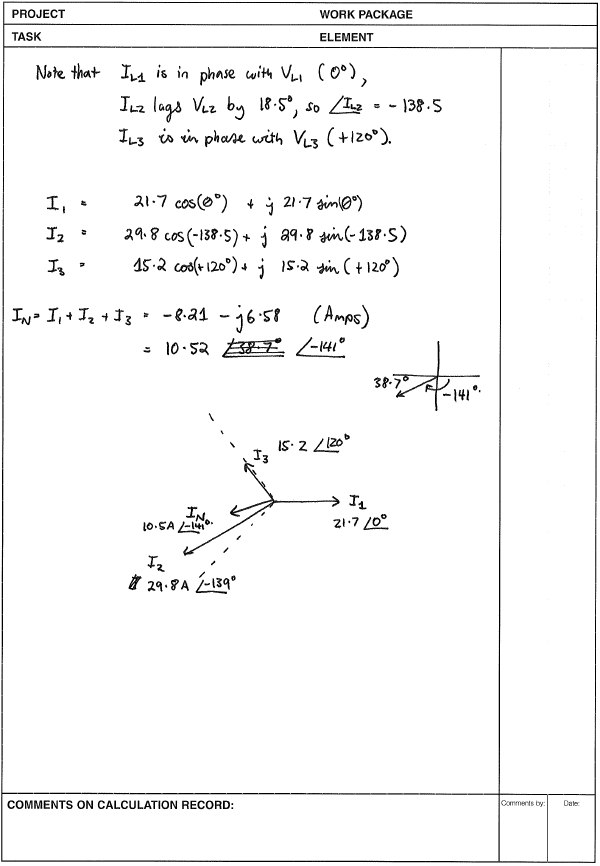I am doing a homework that I got yesterday and it concerns calculating phase currents and a neutral phase current. 3 phase it is. Three individual charges, each on their own phase and a shared 3-phase charge. L2 phase charge has a power factor of cosΦ 0,90.
Homework goes like this:
We have a house with 400/230V grid and in a certain point of time it has charges like these:
L1 - Lightning and heating 3kW L2 - Lightning, heating and motors 4,5kW, power factor cos Φ =0,90 L3 - Lightning and heating 1,5kW.
Additional to those we have a 3-phased boiler that charges our grid with 6,0kW. Calculate phase currents and neutral phase current.
I tried to calculate this over 10 hours now, but for some reason I didn´t "get" the idea of it. This is what i have thought of it this far:
P1 = 3kW + 2kW (latter is 1/3 of that 3-phased boiler) = 5kW
P3 = 1,5kW + 2kW (latter is 1/3 of that 3-phased boiler) = 3,5kW
P2 seems like the "trap" of this task. As far as I have understanding, active powers can´t be summed together in this case. I will get back to this later, first I calculate currents of P1 and P3:
I1 = P1/Uv = 5000W/230V = 21,74A
I2 = P3/Uv = 3500W/230V = 15,22A
Two out of four currents calculated. Now we need the I3, so we could make vectors on paper and solve neutral phase current In.
If I calculate I2 like this, would it be right?
First I name both charges, so I don´t mix them up. P2x is the 4500W charge and P2y is the 2000W charge (1/3 of that 3-phased boilers power)
I2 = (P2x/Uv*cosΦ 0,9) + (P2y/Uv)
= (4500W/(230V*cosΦ 0,9)) + (2000W/230V)
= 21,74A + 8,695A
= 30,435A
Now I have all three currents that I need to solve neutral phase current.
I1= 21,74A
I2= 30,435A
I3= 15,22A
I decided to make an vector drawing out of it.
First vector is the I1 and it goes along L1, because power factor of it is 1. Second vector will be drawn continuing from L1 toward L2.
If there would be no difference in power factor, the angle would be 60°. This time we have it, and it is as much as cosΦ 0,90, as a degrees, it is 25,84°. We will subtract it from that basic angle 60°.
60° - 25,84°= 34,16°
Last current left, until we can measure the neutral phase current. We draw it in an angle of 60°, because once again power factor is 1.
Phew... Now I measure, with shaking hands. And I get 4,5A for a neutral phase current.
Somehow I just feel I didn´t get the exact right answer out of it. There is something that I don´t understand and I think it concerns calculating Phase L2:s active powers.
At first I thought that I could calculate current powers together and solve current out of it. Like this:
P2 = 4500w+2000w = 6500W
I2 = P2/(Uv*cosΦ0,90)
= 6500W/(230V*cosΦ0,90)
= 31,4A
I just felt it can´t be right, because there is kind of two different idle and active powers and from those I should get apparent power. S² = P² + Q² wouldn´t apply straight and true. From combined apparent power I could solve the phase current of I2.
I know that I am not stupid, but a slow learner. Half of our class won´t even try to do this, because they have given up, even if they want to learn. Our teacher rush things forward and he won´t be interested to explain things better.
Yesterday I tried to think of this homework like 6 hours and approximately the same amount today too. If and when I learn this, then I will surely teach it to other people in our class too.


